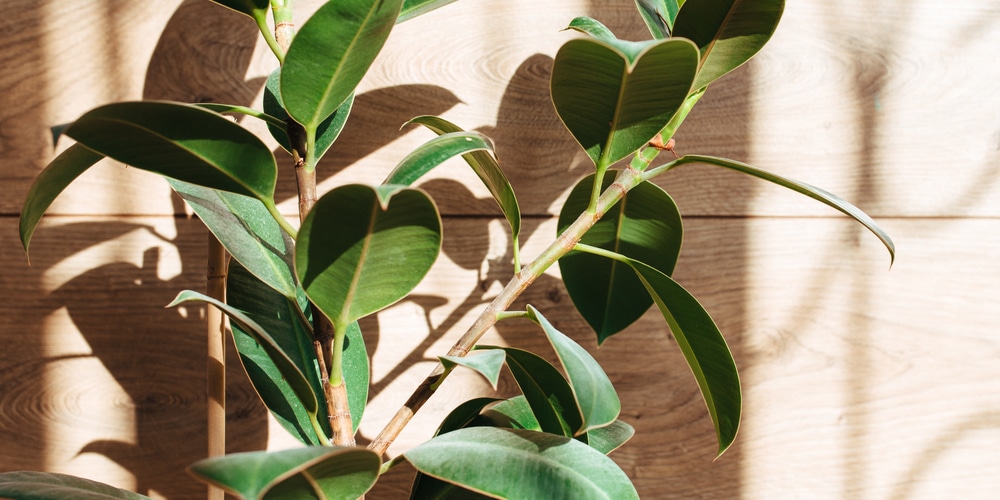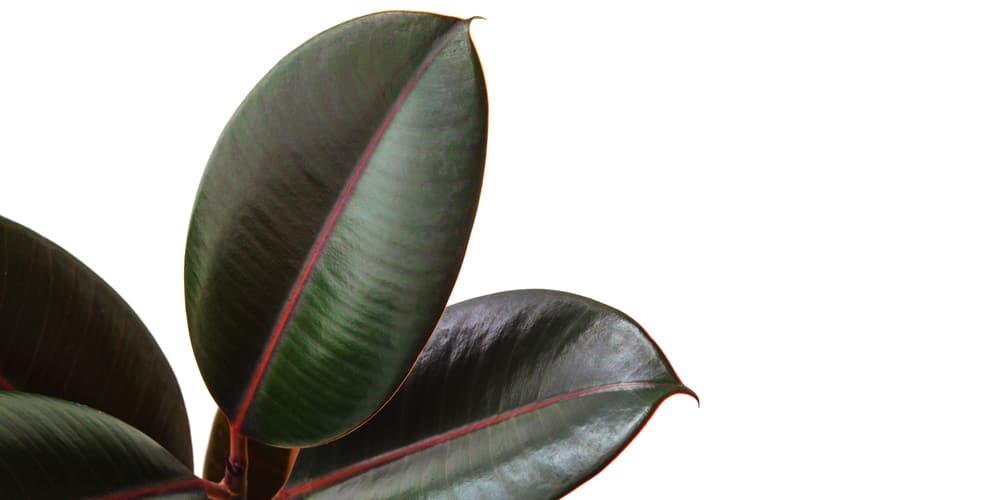One of the most beautiful indoor plants out there is the rubber tree. It’s easy to see why they’re a popular choice for homeowners. They boast large, glossy leaves, and these plants can grow quite tall. These plants make a great statement piece in any room. When used to fill in empty spaces, the rubber plant can liven up any room.
While they are beautiful and easy to care for, rubber plants can suffer from a few problems. One of the most common problems we’ve noticed is that its leaves are prone to falling off. If you’ve noticed your rubber plant’s leaves falling off, don’t worry. We’re here to help you figure out the problem so you can get your plant back to good health.
Rubber Plant Leaves Falling Off: Possible Causes
The upright and large leaves bring grandiose to any space, but when they start to drop off, it can be worrisome. Before you start to panic, it’s important to understand that there are a few reasons why this may be happening. Once you identify the problem, you can take the necessary steps to fix it. Here are a few potential causes of rubber plant leaves falling off:
Changes in Light Conditions
Did you know that these beautiful plants are finicky when it comes to changes in light conditions? This happens when you move it from indoors to outdoors, or vice versa. The leaves will start to fall off as the plant tries to adjust to the new light conditions. You may also notice this happening when the seasons change.
The best way to combat this is by slowly acclimating your rubber tree to the new light conditions. Start by placing it in an area with indirect sunlight and gradually move it around until it’s in the desired location. If you’re moving your plant from indoors to outdoors, do this over the course of a week or two.
Scale Bugs and Other Pests
Scale bugs are one of the most common problems rubber plants face. These pests attach themselves to the leaves and stems of the plant and feed on its sap. Until you’ve taken care of these pests, your plant will continue to drop and lose its leaves.
Neem oil is a natural and effective way to get rid of scale bugs. You can also try horticultural oil or insecticidal soap.
Low Humidity Levels
Because they’re normally found in tropical regions, rubber plants prefer high humidity levels. If the air around your plant is too dry, the leaves will start to fall off. You can increase the humidity around your plant by misting it with water or using a humidifier. You may also position your rubber plant beside other houseplants to create a more humid microclimate.
Too Much Fertilizer
Sadly, some plant owners think that fertilizing their rubber tree more will make it grow faster. However, this couldn’t be further from the truth. This act of kindness will actually do more harm than good.
If you’ve been fertilizing your plant too much, your rubber plant will immediately lose some of its leaves. Remember that they need very little feeding once in a while. You don’t need to fertilize your plant more than once or twice a year.
Air Drafts and Frost Snaps
Rubber plants are sensitive to drafts and cold temperatures. If the leaves are exposed to these elements, they’ll start to fall off. While your home may provide the ideal environment for your plant, make sure that you’re not placing it too close to a drafty window or door.
You should also be careful when moving your plant outdoors for the summer. Make sure that the temperatures are warm enough and there’s no risk of frost before putting your rubber tree outside.
Overwatering or Underwatering
One of the most common reasons for rubber plant leaves falling off is overwatering or underwatering. If you’re giving your plant too much water, the roots will start to rot. This will cause the leaves to fall off and turn yellow. On the other hand, not watering your plant enough will cause the leaves to turn brown and drop off.
Rubber plant leaves falling off: Final Thoughts
While there are a few reasons why your rubber plant leaves may be falling off, most of them can be easily fixed. By identifying the problem and taking corrective action, you can help your plant get back on track.

